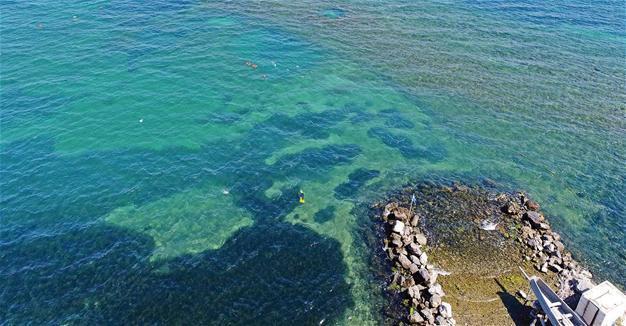Excavations start in ‘sunken city’ in İzmir
İZMİR – Anadolu Agency
 A Roman ancient city, discovered during one of the world’s most important archaeology projects, the Liman Tepe excavations, is set to serve as an archeopark after excavations end.
A Roman ancient city, discovered during one of the world’s most important archaeology projects, the Liman Tepe excavations, is set to serve as an archeopark after excavations end. Some spots on the sea in Urla were detected on aerial photos, which later turned out to be the ruins of the ancient city of Klazomenai. Later on, underwater works were initiated under the coordination of Ankara University Research Center for Maritime Archaeology (ANKÜSAM), finding the ruins of settlements from 7th century B.C. to the Roman era.
Works that have been ongoing since 2000 in the archaic port of Liman Tepe have revealed that settlement existed there for nearly 6,500 years. Last year, a Roman-era city was found on the coasts of Karantina Island.
The works have recently started to unearth the Roman city, which is estimated to have collapsed in an earthquake in 1,000s B.C.
Hayat Erkanal, the head of the Liman Tepe excavations, said they focused on the Roman city as the second excavation spot and completed the preparations for the excavations and the process of approval.
He said the city’s big structures, roads and columns are visible, adding that they will work to unearth them completely.
“We will go into a different work this year. We want to arrange this place as Turkey’s first underwater archeopark. We have completed all legal process transactions. This is a well-preserved Roman city with its roads and columns. We need to protect it in its original place; we cannot move it to another place. Once the city is unearthed, people will be able to dive here with the accompaniment of expert guides. We will organize tours by boats with glass floors,” he said.
Erkanal stated the underwater archeopark is rare in the world, adding that they want to add a new touristic value to Turkey. He said they will also build an ancient Roman harbor in the archaeopark, which is set to be established in the Çeşmealtı neighborhood on land.
He said they discovered several sunken ships off Urla, dating back to between 2nd century B.C. and the Ottoman era.
The ships are set to be displayed in the future after their purification from salt.
“We don’t plan to establish a museum here as we have enough museums in the region. But we are thinking of an archeopark. The municipality is providing us support. We will have a field to display ancient chip models. We want to revive a Roman harbor on the coast of the sea. In the future, this place will be a destination for tourists. People will dive and see a Roman city as well as the replicas of a Roman harbor and ships from various periods of history. We already have many visitors. People are curious about this place. Schools and non-governmental organizations organize tours. Since this is a research center we give information about the underwater works and the history of the region to visitors,” he added.
One of three underwater excavations in Mediterranean
Saying that working in the sea was more difficult than on land even though they find 10 times more artifacts underwater, Erkanal noted that the artifacts were fragile and would break into pieces when they get removed from the sea because the salt on them is crystalized. “This is why they must be purified from salt in a laboratory environment,” he said.
He added that they had the opportunity at ANKÜSAM, founded with the support of the late businessman Mustafa Koç, who died of a heart attack last year.
“The excavations in Liman Tepe were shown as one of the most important 10 underwater excavations in the world by a respected archaeology publication in the U.S. It is mentioned alongside the Caesarea excavations in Israel and the French Alexandria excavations,” he added.
















